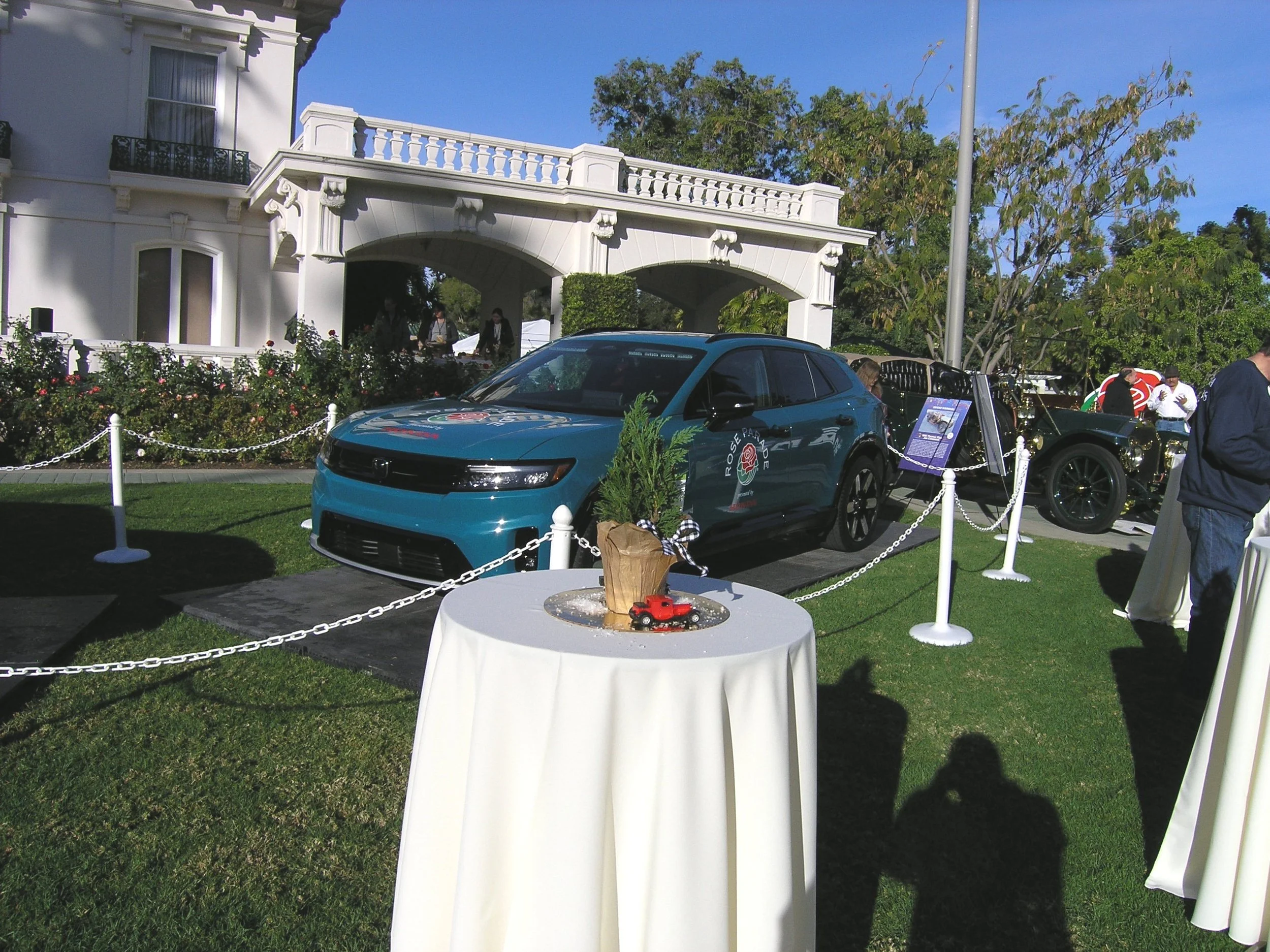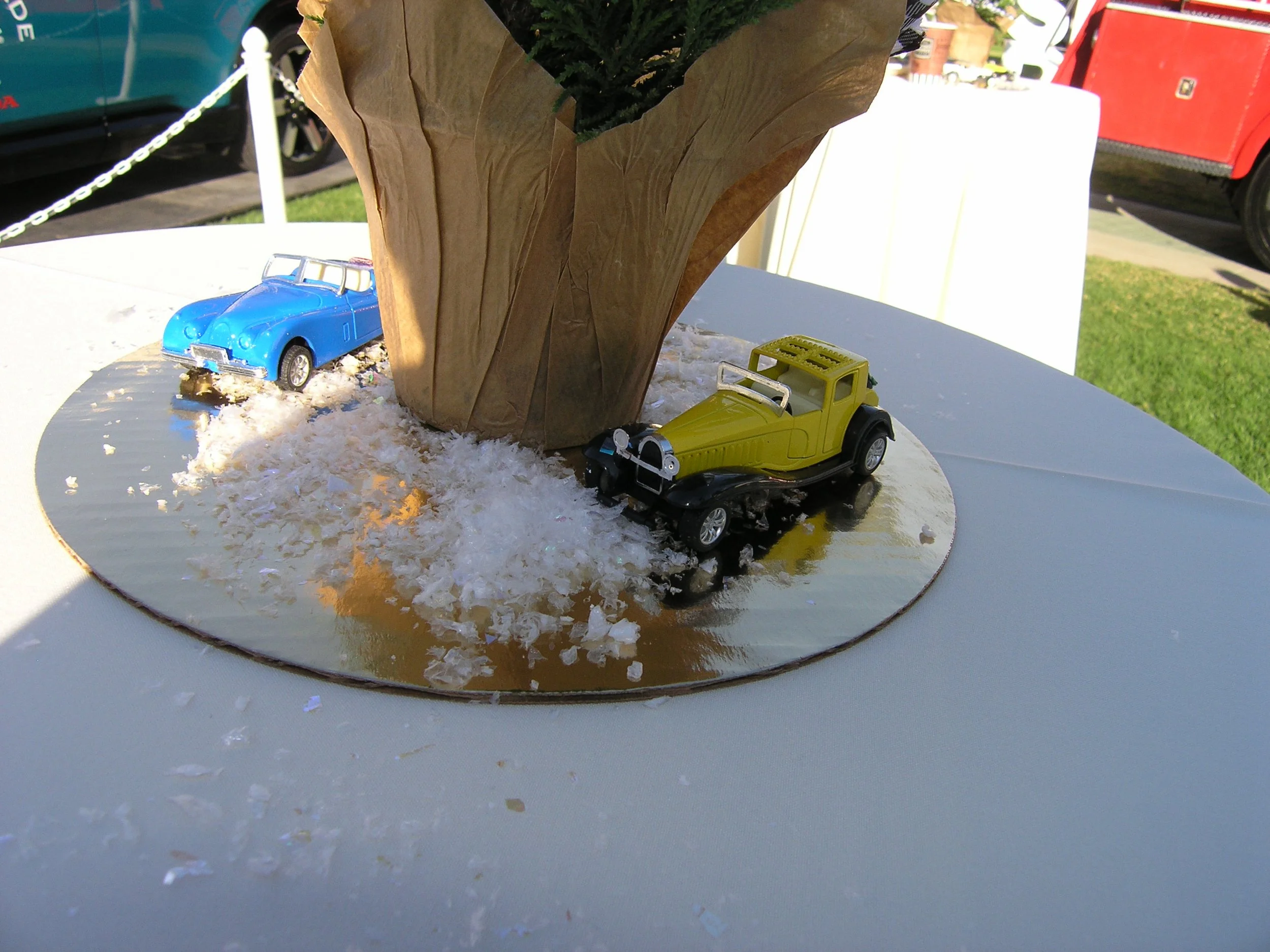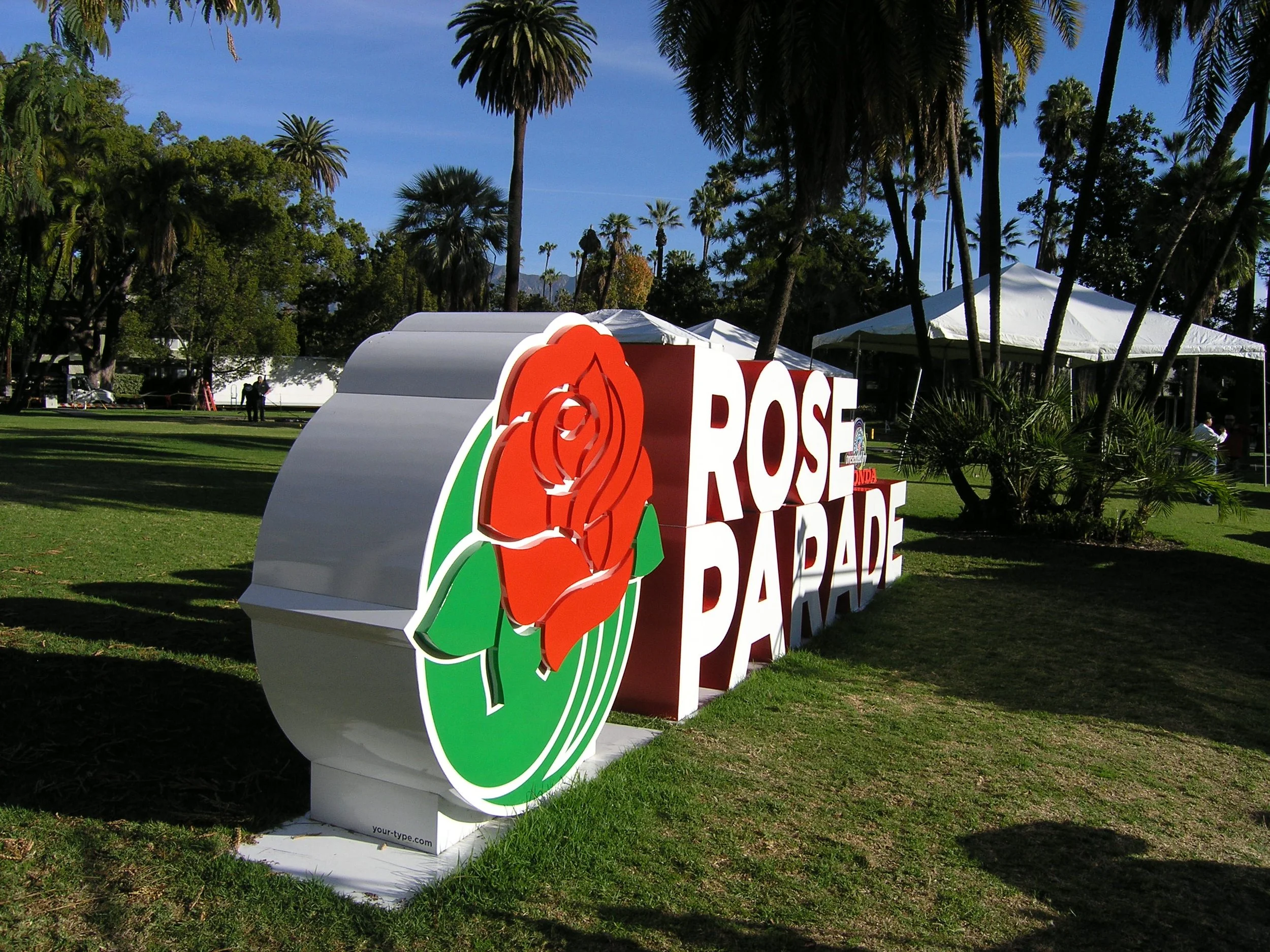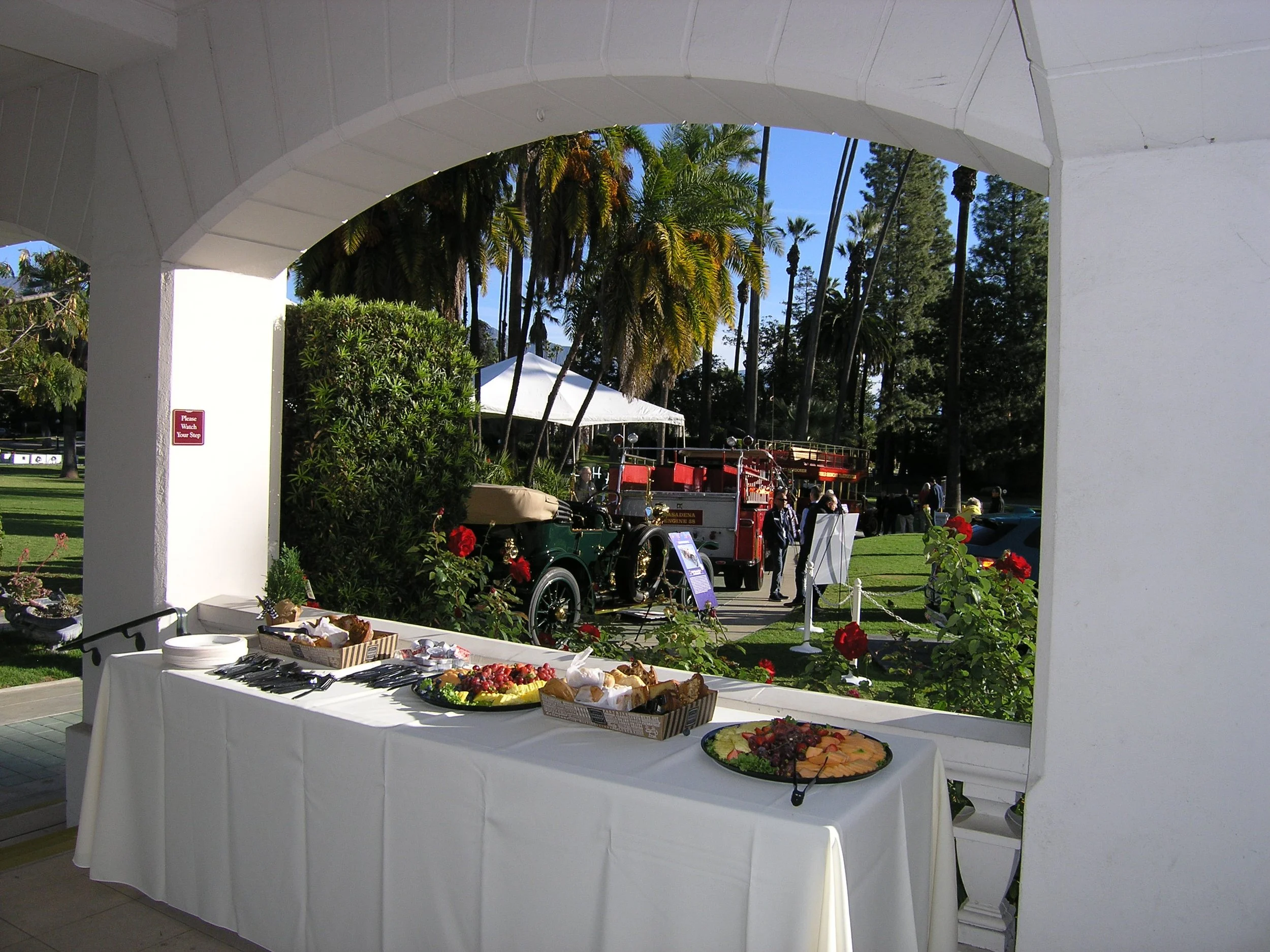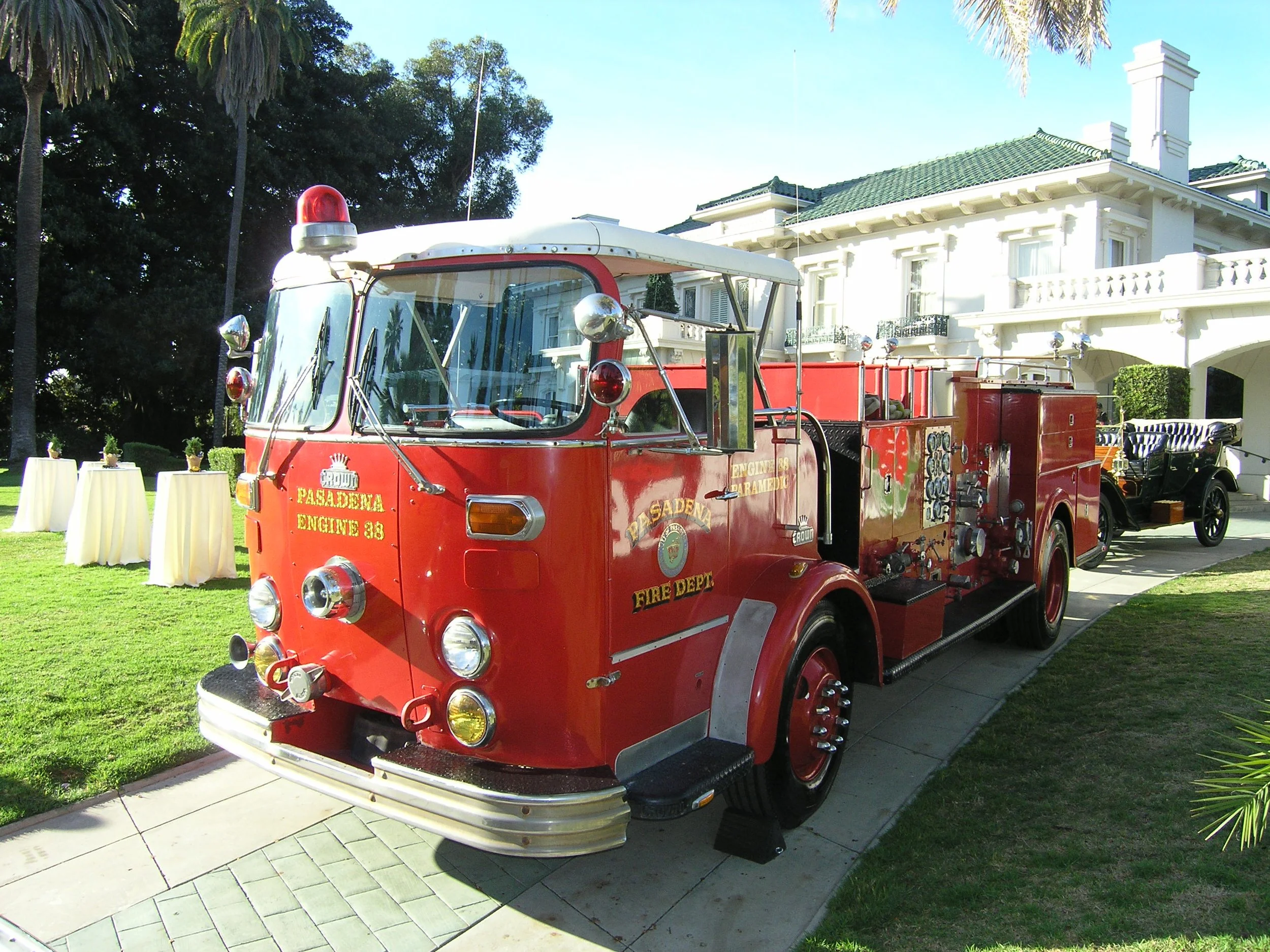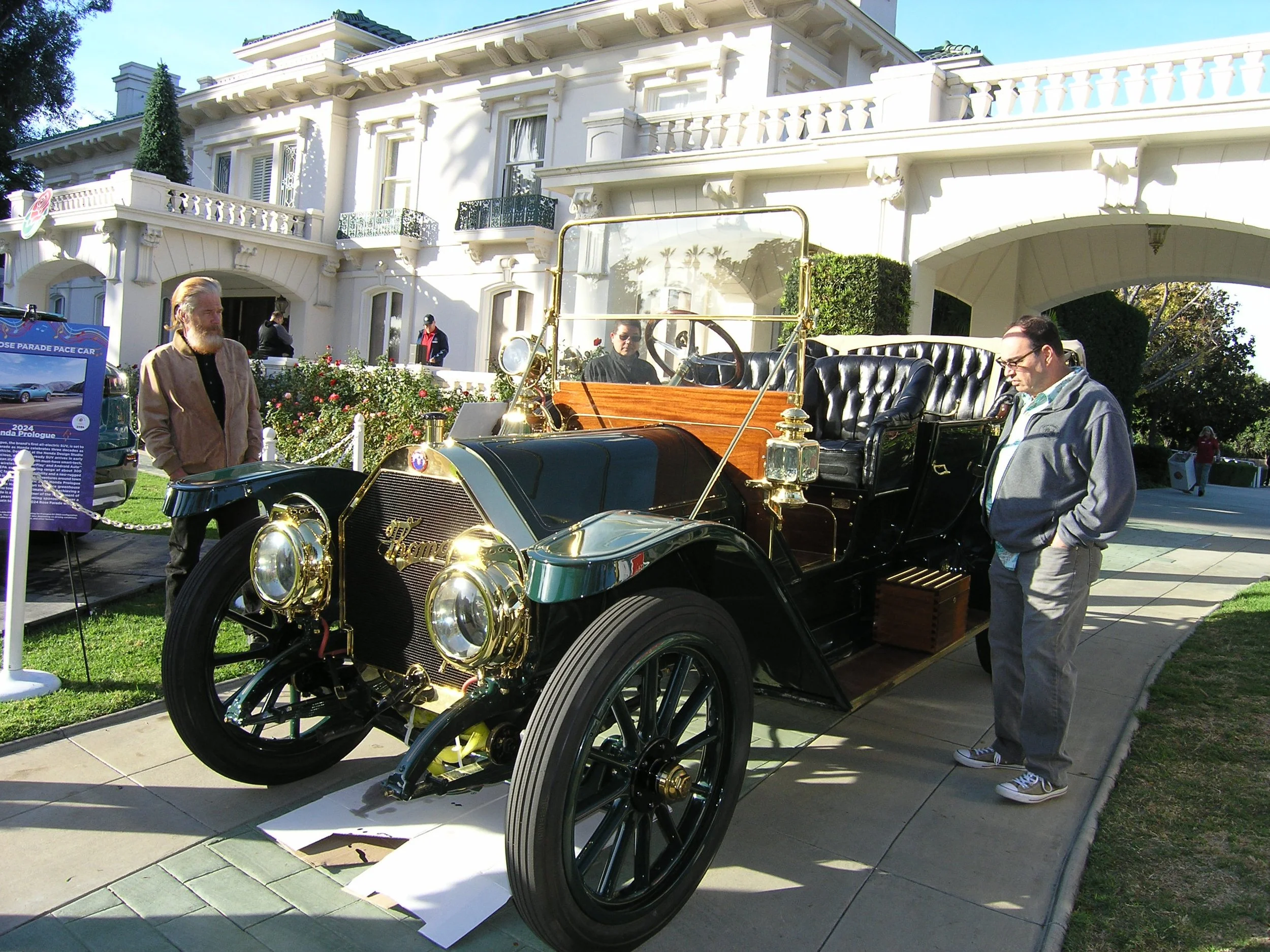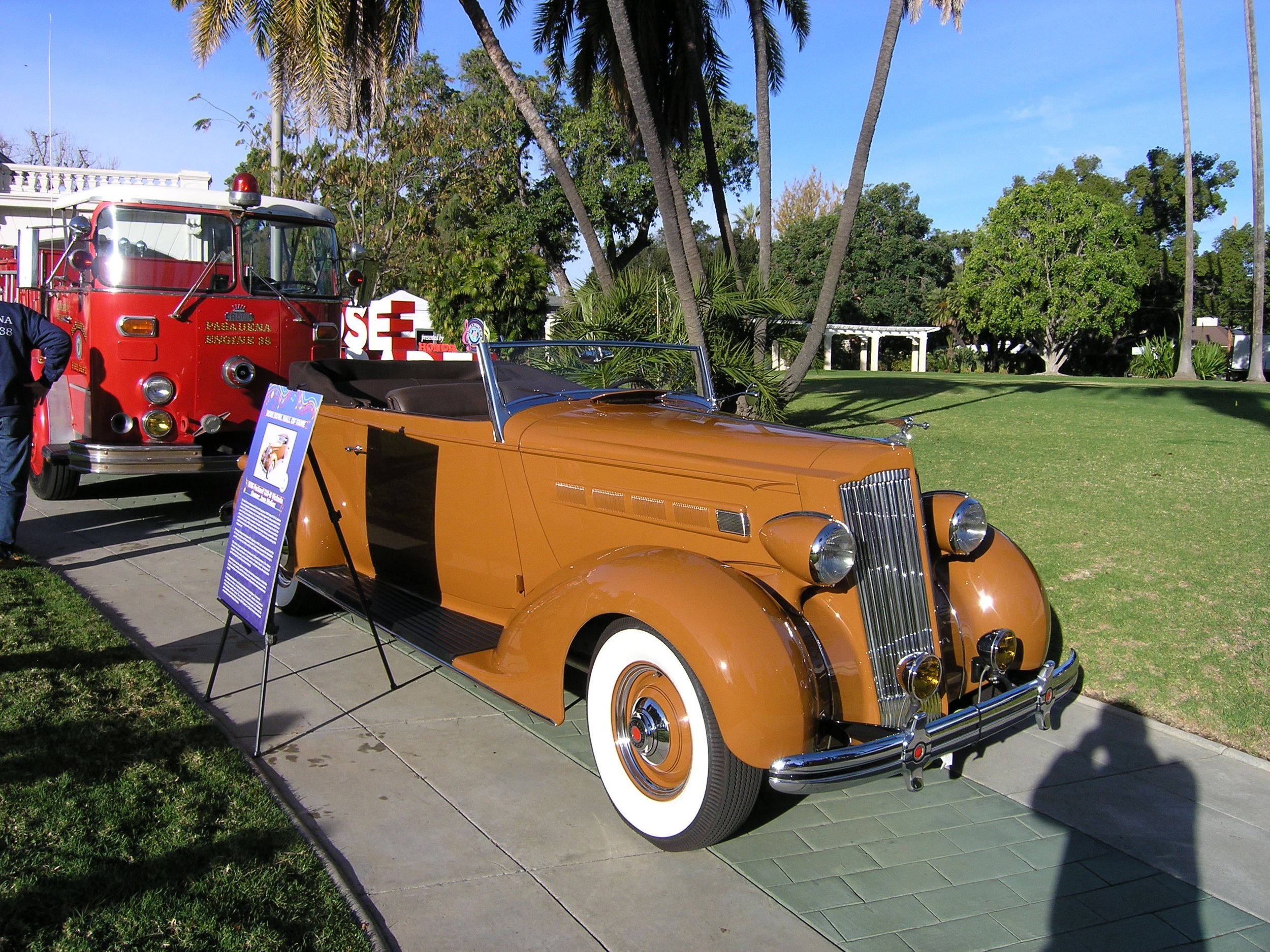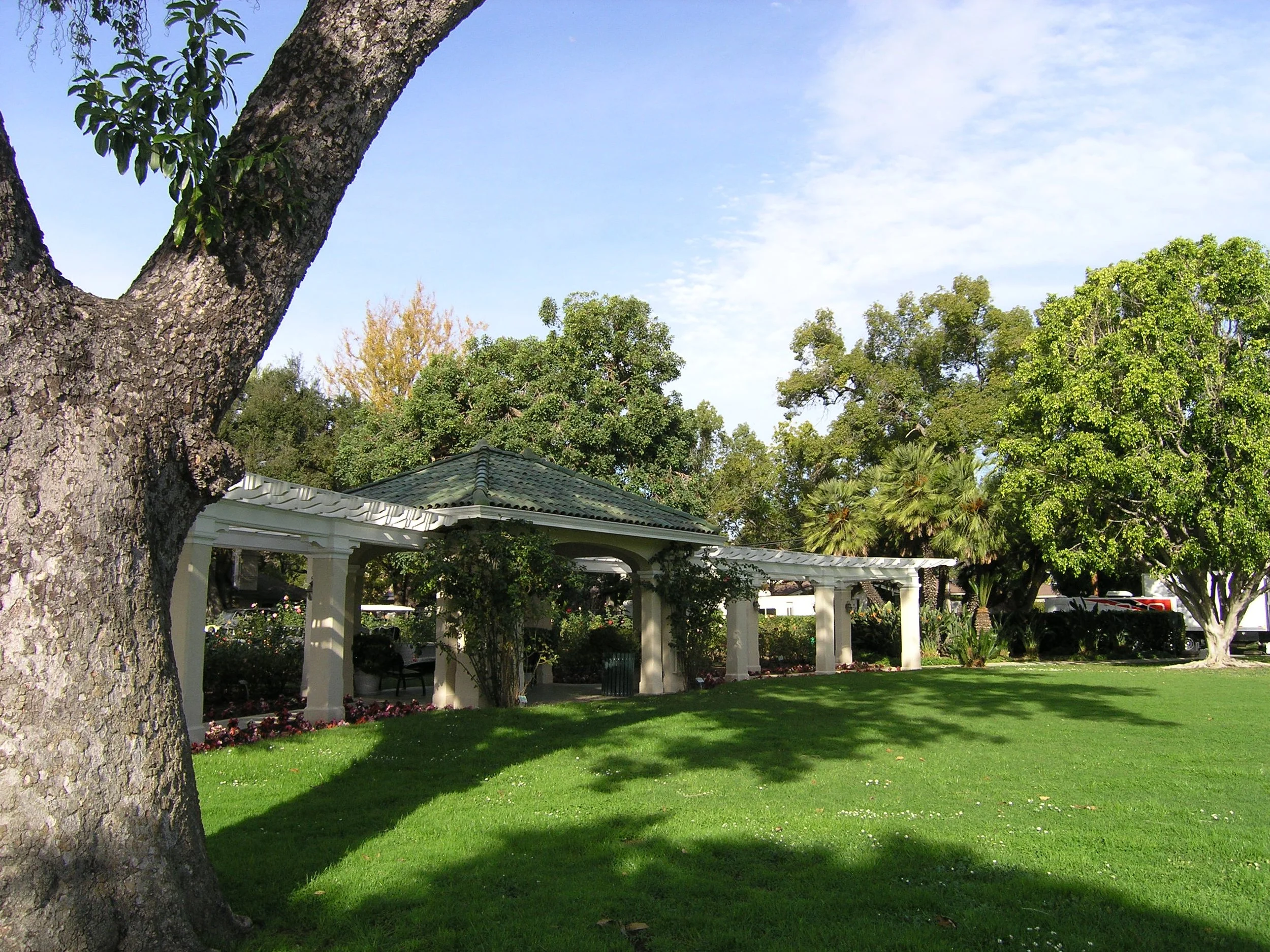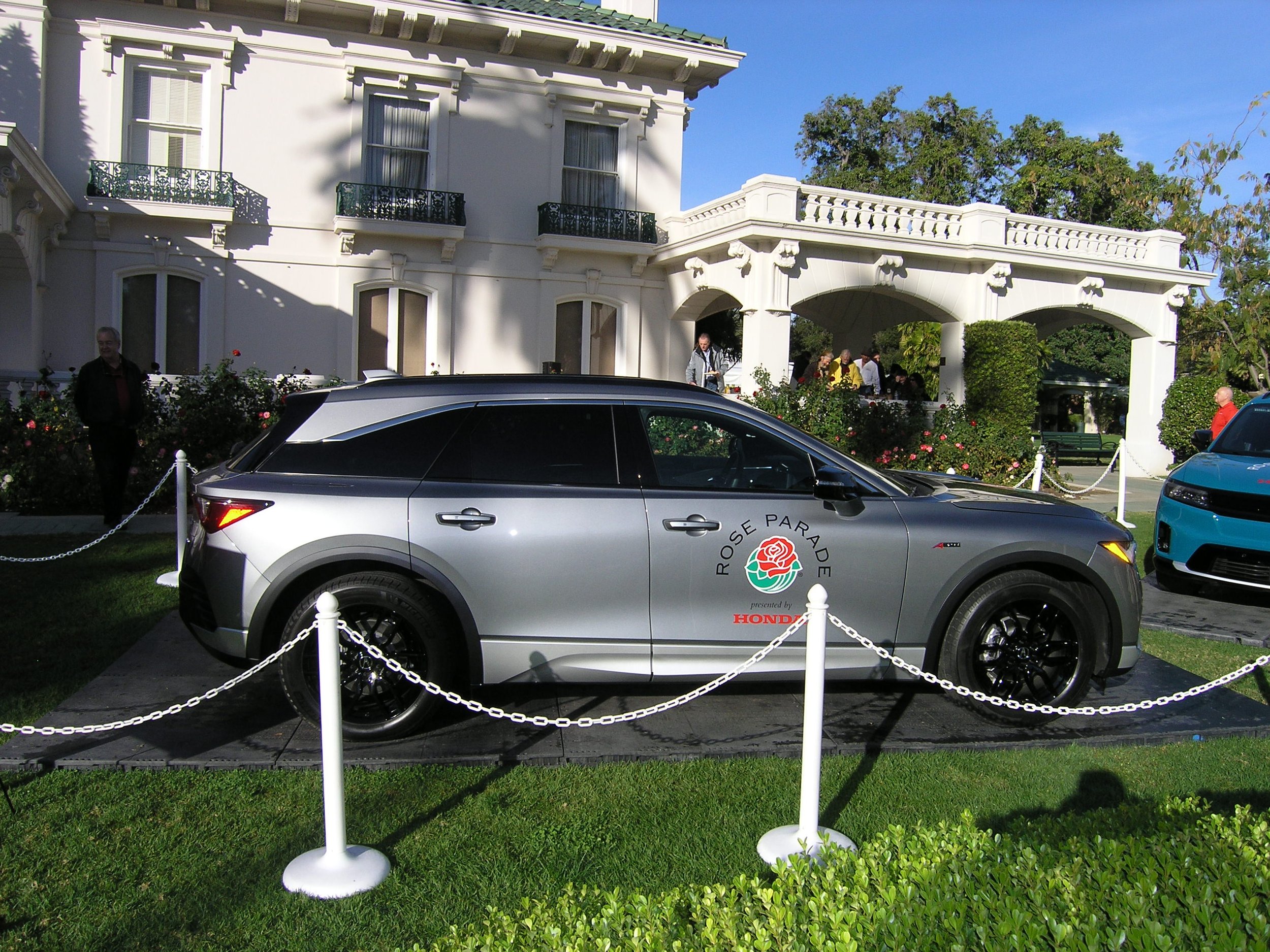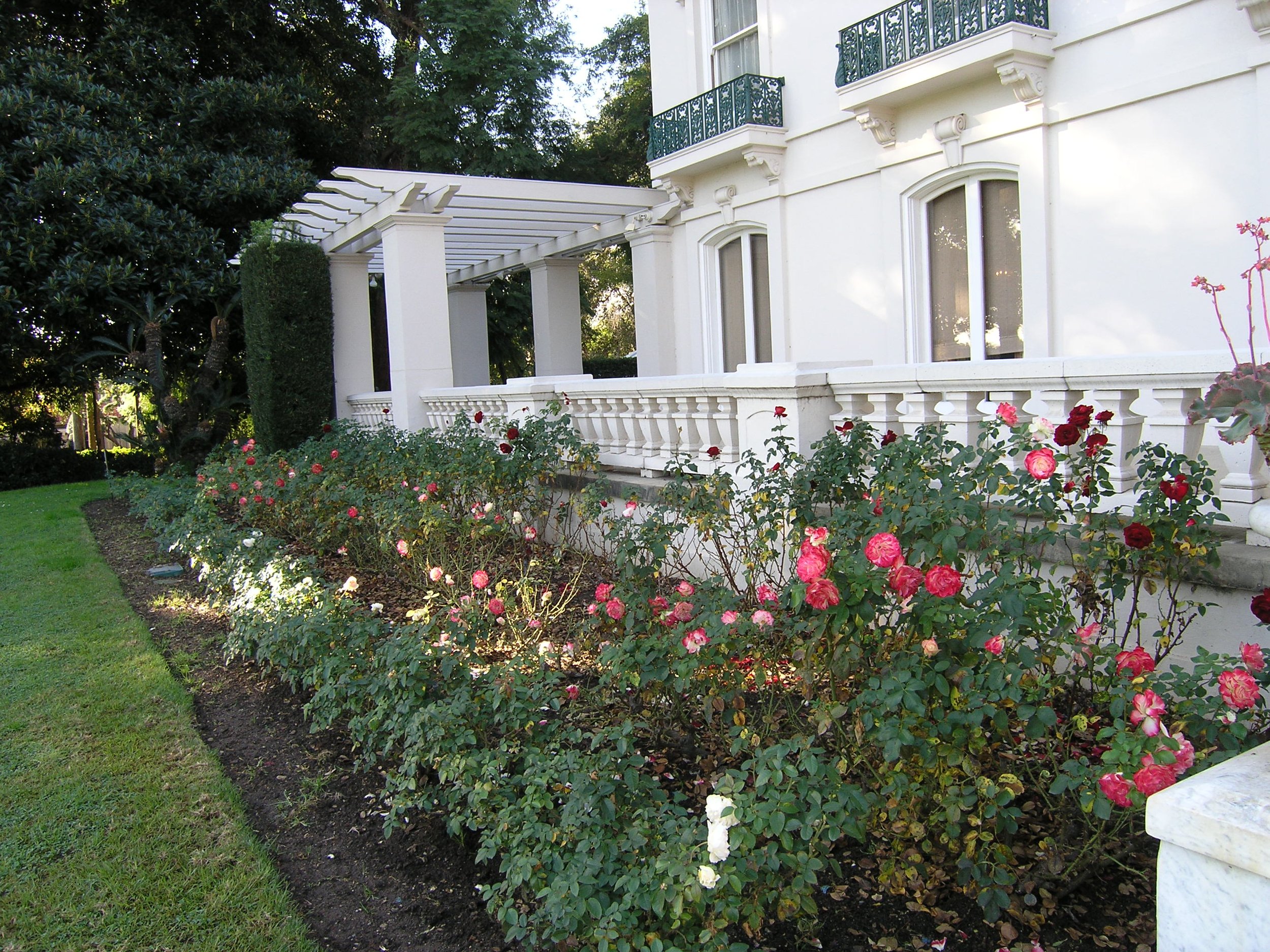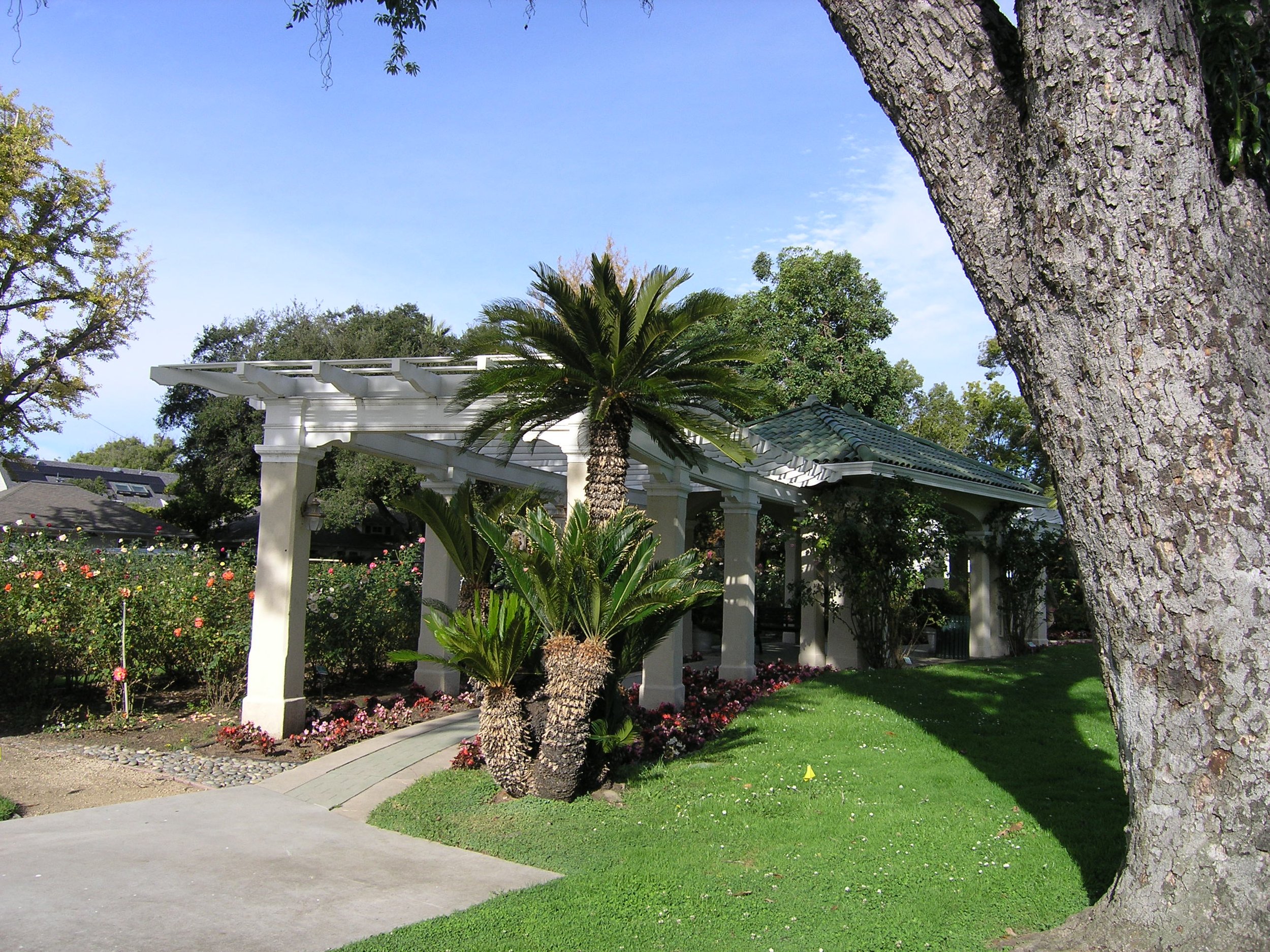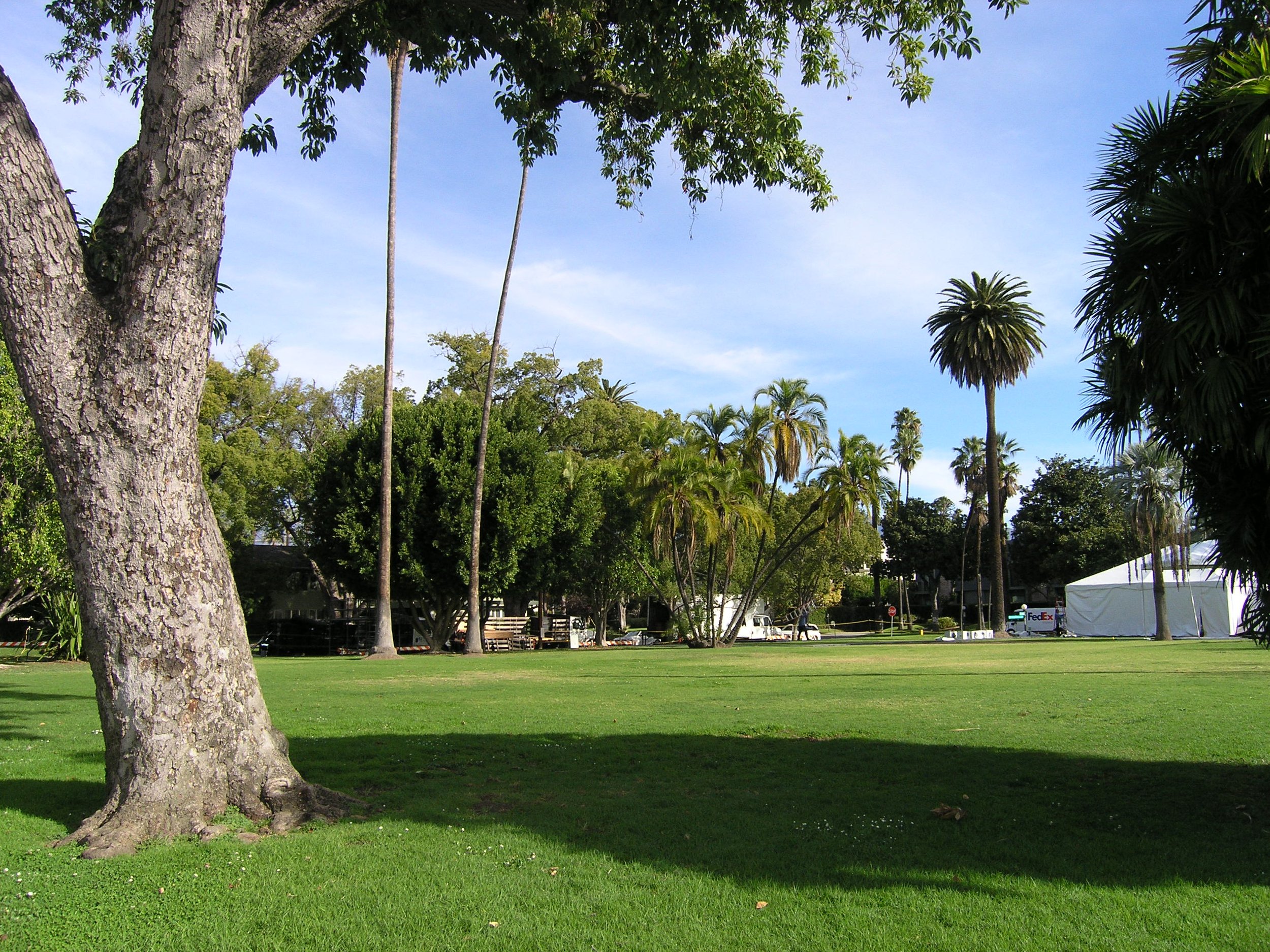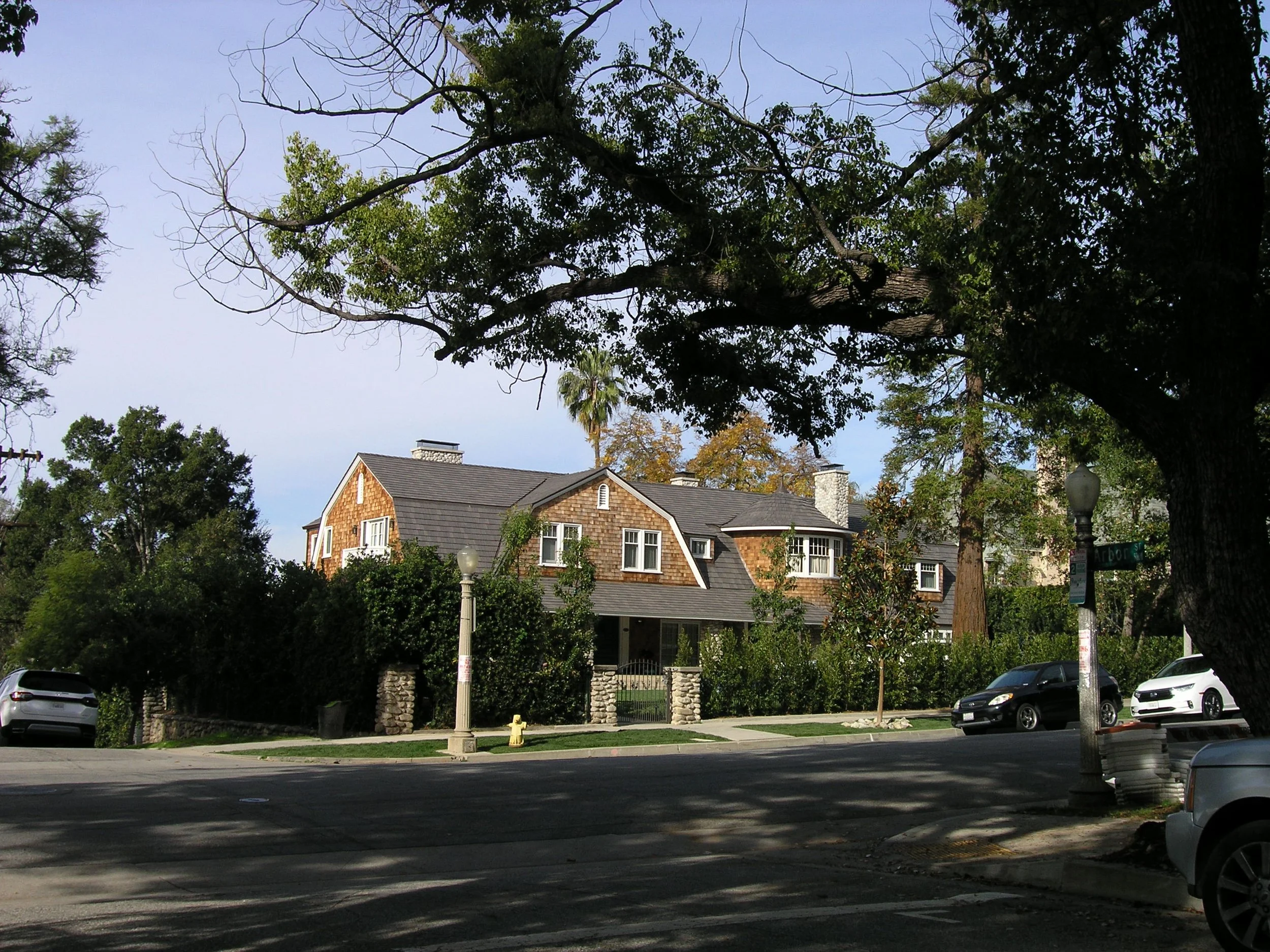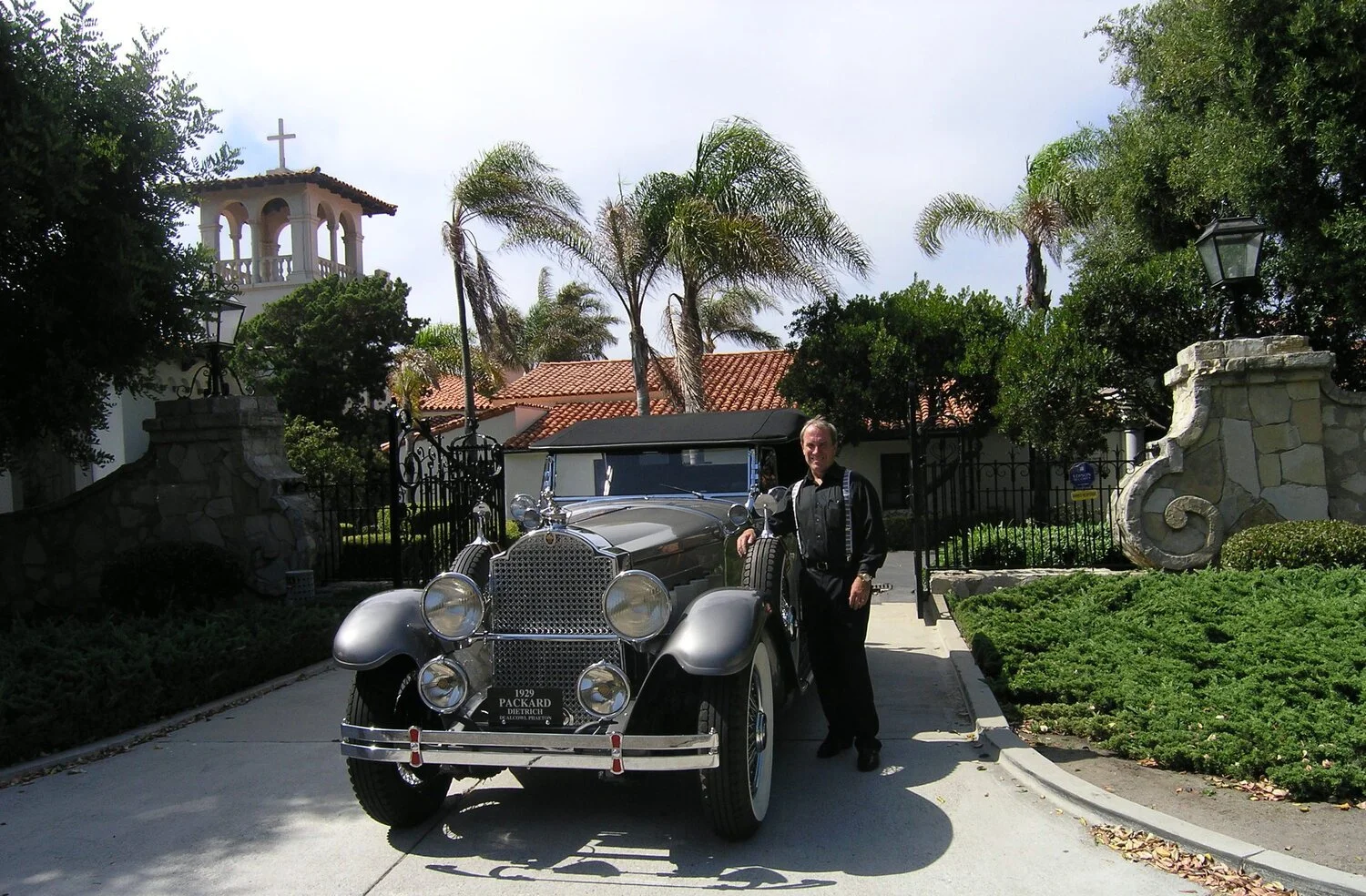Vintage Glamour and Modern Challenges: A Peek into the Rose Parade's Exclusive Preview By President of the Palos Verdes Historical Society, Dana Graham
On December 27 there was an invitation only preview of the Rose Parade cars and of the Wrigley Mansion, which was willed in 1958 to the Rose Bowl Foundation on the condition that it be used for Rose Parade activities. The Rose Bowl Committee has honored that tradition. If you watch the Parade on the right channel, you will see the Parade go by the Wrigley Mansion.
It is an spectacular early 20th century grand estate of approximately 18,000 square feet, something like 17 bedrooms, a lifetime supply of bathrooms, quarters for a dozen servants, etc. This is the same Wrigley family that had the mansion in Avalon, Wrigley baseball field, all courtesy of chewing gum.
Here are some of the pictures we took during the event. As you can see, there are only 4 Parade vehicles this year. It is very difficult to drive these old cars in a parade. If you are interested in the reason, I can get into the weeds below on why that is.
When you watch the Parade, you will see the 1909 Thomas Flyer carrying the Grand Marshall. This was a very expensive car in the day, when cars were generally only owned by the rich and were still viewed as playthings, and not the necessity that they are today. It is the same model car that was featured in the movie The Great Race (Tony Curtis, Natalie Wood, etc). The other car is a 1936 Packard 120 convertible sedan.
The 120 was introduced in 1935 as the Depression deepened and eroded the sales of the traditionally high end Packard line. It was a cheaper car and probably saved Packard’s bacon, as their competitors (Duesenberg, Pierce-Arrow, Auburn, etc) were driven out of business. The problem for Packard was that it also eroded their high end image, so that after the War, they no longer had the high end luster that had carried them since about 1905, and the walls caved in in 1956.
Also of interest is the double decker bus, a recreation of the ones ubiquitous in London from the 1920’s thru at least the ’50’s. This vehicle is the creation of Disney World and, interestingly enough, was purchased by former Stanford basketball players Robin and Brooke Lopez. Then, of course, there is the requisite fire engine, I guess in case any of the aforementioned vehicles catch fire.
So, when you watch the Parade, that is the back story.
THE WEEDS: Why is it so hard to get your car, no matter how exotic or rare, accepted into the Rose Parade? Here is a big part of the reason: prior to WW 2, cars ran on 60 octane gas. It was only during the War that the demand for fighter plane performance caused higher octane fuels to be developed. Do you remember Phillips 66 or Union 76 gasoline? Those numbers came from their post-war octane ratings, about which they were bragging. Higher octane gasoline has proportionately more energy in it, but also has a lower ignition point – meaning it ignites at a lower temperature. Pre-war cars were all designed to run on 60 octane, which made it desirable to pre-heat the gas before it got into the engine in order to extract the maximum performance from it. If you own one of those cars today and maintain its mechanical originality, you generally put 87 octane in it – the lowest you can find – then add Secret Sauce to it to help raise the ignition point so that it doesn’t cook off in the fuel line or intake manifold and produce what amounts to vapor lock. But that keeps you out of most serious parades because they only have so many tow trucks. If you really want to be in parades, you either make modification to the engine (modern fuel pump, etc) which helps overcome the issue or, in extreme cases (about which it pains me to write) put a whole modern engine in the car . . . which will usually get you kicked out of the classic car clubs, and incur the scorn and opprobrium of collectors . . . but I digress.
So the old cars you see in parades generally have some modification made to them, without which they simply would not idle for 2+ hours without stalling, holding up the parade, and forcing the hosts to do a soft shoe until the tow truck showed up. And now you know.
Palos Verdes Estates Rose Parade Float from the 1920’s
Dana Graham, real estate expert, historian, PV Native and you can find Dana at www.danagraham.com
Dana is President of the Palos Verdes Historical Society.


